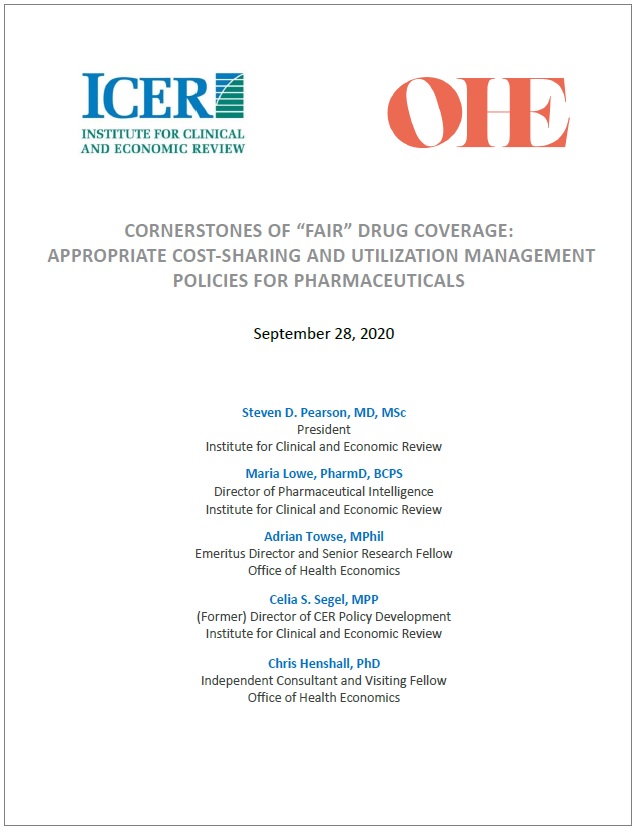Sign up to our newsletter Subscribe
Analysing Global Immunisation Expenditure

In the focus on US drug prices, ICER has contributed thinking on determining when price aligns with patient benefits. Less debated is whether insurance coverage provides patients with fair access to a drug with a fair, value-based, price. But how do we define fair access? This paper from ICER and OHE authors develops a fair access framework, proposing Ethical Goals for Access and Fair Design Criteria for cost sharing and prior authorization protocols.
In the focus on US drug prices, ICER has contributed thinking on determining when price aligns with patient benefits. Less debated is whether insurance coverage provides patients with fair access to a drug with a fair, value-based, price. How do we define fair access? This paper from ICER and OHE authors develops a fair access framework, proposing Ethical Goals for Access and Fair Design Criteria for cost sharing and prior authorization protocols in five areas:
Clinical need is the key driver for decision making, but fair design criteria should also depend on whether drug prices reflect clinical and economic value or not. If they do, then plans should minimise non-clinical obstacles to access. Key recommendations include:
Cost Sharing: (1) Patient cost sharing should be based on the net price to the plan sponsor, not the unnegotiated list price; (2) At least one drug in every class should be covered at the lowest relevant cost-sharing level unless all drugs are priced higher than an established fair value threshold. (3) If all drugs in a class are priced so that there is not a single drug that represents a fair value as determined through value assessment, it is reasonable for payers to have all drugs on a higher cost-sharing level.
Clinical Eligibility Criteria: (1) clinical eligibility criteria should complement the FDA label language, for example on standards for diagnosis. They should not go beyond reasonable use of clinical trial inclusion/exclusion criteria to disadvantage patients with unrelated underlying disabilities and should consider evidence limitations due to systemic under-representation of minority populations in trials; (2) For reasonably priced drugs, clinical eligibility criteria should not deviate from the FDA label in a manner that would narrow coverage. (3) For drugs deemed to be priced unreasonably, criteria may narrow coverage to the eligibility criteria from the pivotal trials if implemented with reasonable flexibility and supported by robust appeals procedures.
Economic step therapy: Payers should explicitly affirm or present evidence that (1) use of the first-step therapy reduces overall health care spending, not just drug spending; (2) the first-step therapy is clinically appropriate for all or nearly all patients and does not pose a greater risk of any significant side effect or harm; patients will have a reasonable chance to meet their clinical goals with first-step therapy; (3) failure of the first-step drug and the resulting delay in beginning the second-step agent will not lead to long-term harm for patients; and (4) patients are not required to retry a first-line drug with which they have previously had adverse side effects or an inadequate response at a reasonable dose and duration.
The complete list of fair access criteria is included within the paper.
In preparing the paper, the authors undertook a literature review and conducted stakeholder interviews. Representatives from patient organizations and clinical societies joined ICER’s Policy Leadership Forum – senior policy leaders from 25 payer and life science companies – in December 2019 to discuss a preliminary draft of this paper. This, final, paper takes account of those discussions.
Please cite this report as:
Pearson S, Lowe M, Towse A, Segel C, Henshall C. 2020. Cornerstones of “Fair” Drug Coverage: Appropriate Cost-Sharing and Utilization Management Policies for Pharmaceuticals. Institute for Clinical and Economic Review and the Office of Health Economics.
Cornerstones of “Fair” Drug Coverage: Appropriate Cost – Sharing and Utilization Management Policies for Pharmaceuticals
